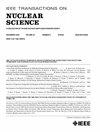Evaluation of an LC-VCO-Based ADC Architecture With a Tapped-Delay-Line Phase Quantizer
IF 1.9
3区 工程技术
Q3 ENGINEERING, ELECTRICAL & ELECTRONIC
引用次数: 0
Abstract
Analog-to-digital converters (ADCs) using a voltage-controlled oscillator (VCO) offer a promising approach to time-domain ADCs. Traditionally, ring-oscillator-based VCOs (RO-VCOs) have been favored for their compact size and explicit phase detection. In contrast, LC resonator-based VCOs (LC-VCOs) provide better phase noise performance, leading to improved timing. However, the LC-VCO approach encounters challenges such as implicit phase detection and linearity suppression. We propose a time-domain architecture for an LC-VCO-based ADC that employs a tapped-delay line (TDL) as a phase quantizer (PQ). This architecture includes a feedback loop designed to stabilize phase quantization through the TDL and to suppress the nonlinearities of the VCO in voltage-to-frequency conversion. The architecture corresponds to a sigma-delta ADC in the voltage domain. We present the analysis and design of the ADC architecture. The architectural concept was proven in a system using discrete components, where a signal-to-noise-and-distortion ratio (SNDR) of 71.3 dB and an effective number of bits (ENOB) of 11.5 bits were achieved for a bandwidth (BW) of 400 kHz, despite existing nonlinearities. These results confirm the feasibility of the LC-VCO-based ADC architecture although better performance can be anticipated with custom integrated circuit (IC) implementations.基于 LC-VCO 的 ADC 架构与分接延迟线相位量化器的评估
使用压控振荡器(VCO)的模数转换器(adc)为时域adc提供了一种很有前途的方法。传统上,基于环形振荡器的压控振荡器(RO-VCOs)因其紧凑的尺寸和明确的相位检测而受到青睐。相比之下,基于LC谐振器的VCOs (LC-VCOs)提供了更好的相位噪声性能,从而改善了时序。然而,LC-VCO方法面临着隐式相位检测和线性抑制等挑战。我们提出了一种基于lc - vco的ADC的时域架构,该架构采用分接延迟线(TDL)作为相位量化器(PQ)。该结构包括一个反馈回路,旨在通过TDL稳定相位量化,并抑制压控振荡器在电压-频率转换中的非线性。该结构对应于电压域中的σ - δ ADC。我们给出了ADC架构的分析和设计。该架构概念在使用离散元件的系统中得到了验证,尽管存在非线性,但在带宽(BW)为400 kHz的情况下,信噪比(SNDR)为71.3 dB,有效位数(ENOB)为11.5位。这些结果证实了基于lc - vco的ADC架构的可行性,尽管通过定制集成电路(IC)实现可以预期更好的性能。
本文章由计算机程序翻译,如有差异,请以英文原文为准。
求助全文
约1分钟内获得全文
求助全文
来源期刊

IEEE Transactions on Nuclear Science
工程技术-工程:电子与电气
CiteScore
3.70
自引率
27.80%
发文量
314
审稿时长
6.2 months
期刊介绍:
The IEEE Transactions on Nuclear Science is a publication of the IEEE Nuclear and Plasma Sciences Society. It is viewed as the primary source of technical information in many of the areas it covers. As judged by JCR impact factor, TNS consistently ranks in the top five journals in the category of Nuclear Science & Technology. It has one of the higher immediacy indices, indicating that the information it publishes is viewed as timely, and has a relatively long citation half-life, indicating that the published information also is viewed as valuable for a number of years.
The IEEE Transactions on Nuclear Science is published bimonthly. Its scope includes all aspects of the theory and application of nuclear science and engineering. It focuses on instrumentation for the detection and measurement of ionizing radiation; particle accelerators and their controls; nuclear medicine and its application; effects of radiation on materials, components, and systems; reactor instrumentation and controls; and measurement of radiation in space.
 求助内容:
求助内容: 应助结果提醒方式:
应助结果提醒方式:


